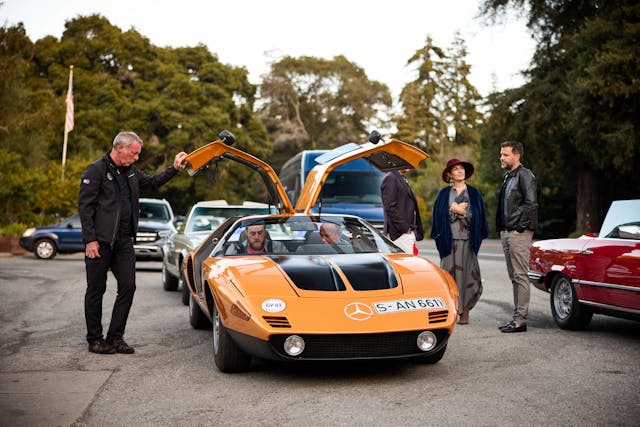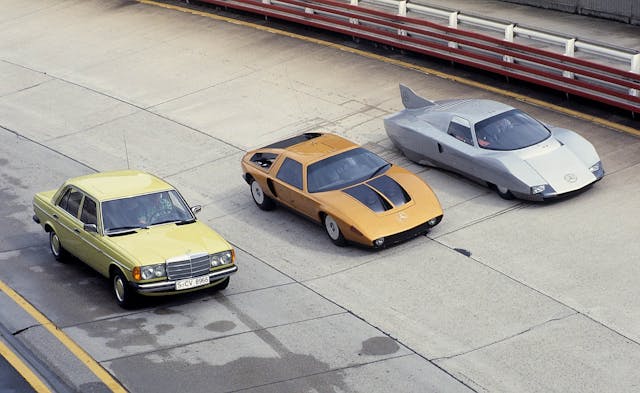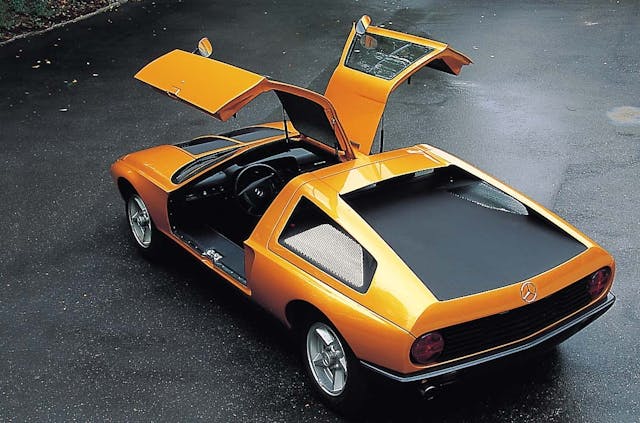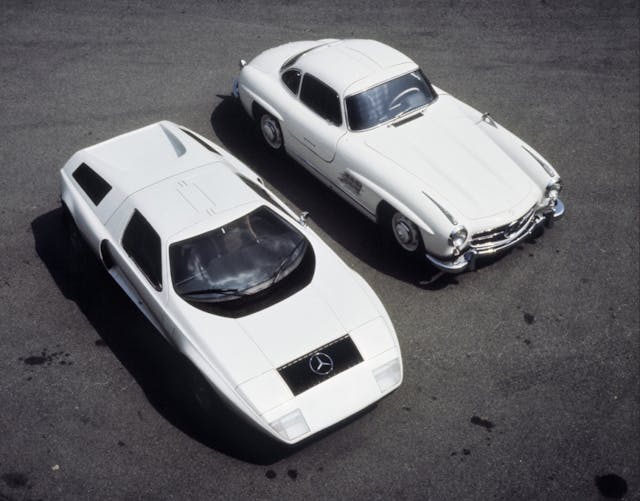Riding in a 1970 Mercedes-Benz C111 is the ultimate historical tease
Doesn’t” isn’t equitable to “can’t” when it comes to making fantastical cars. Walk the halls of any major automaker, be it in Milford, Michigan, Toyota City, Stuttgart, or Seoul, and you’ll find scores of talented designers and bright engineers. From an engineering standpoint, there’s very little standing in the way of Kia building a hypercar.
Of course, Kia has no desire to divert billions of bucks and brainpower toward this uncharacteristic and highly unprofitable endeavor. The capabilities and ambitions of engineers and designers tend to run into the brick wall of C-suite prerogatives and balance sheet realities.

Stuttgart spat out a run of 17 bronze-orange gullwing’d dream-lozenges between 1969 and 1979 under the C111 banner, all destined for no more than a permanent spot in the archives. These shapely, low-slung coupes were not some failed-in-utero supercar project. Rather, they were highly advanced testbeds and practical concepts that shaped development of Mercedes’ next-gen tech. Aside from deepening Merc’s understanding of composite materials, safety, and aerodynamics, these concepts were primarily designed for testing the production viability of the Wankel rotary engine (Spoiler: It wasn’t viable. The Wankel proved too thirsty). In essence, they were a demonstration of what Mercedes could do…but chose not to.
It’s not like the demand wasn’t there. A series of public showings and demonstrations of the C111 project led to stacks of blank checks in Benz’ mailroom from hungry customers, the cashing of which would have made even a small production run somewhat viable. But Merc didn’t budge and kept the C111 at the back of the barn, leaving us with a tantalizing view into what a mid-1970s German supercar might have been.

The C111-II present at Monterey Car Week is inarguably the handsomest iteration of the 13 extant C111s still residing in Mercedes’ archives, if not a smidge generic. I love—love—the Weissherbst (White Autumn) paint hue, but the safety orange appearance and no-frills attitude make it appear a bit like a hypothetical government-issue supercar.
We mentioned it’s a longterm tenant at the archives, because no C111 has ever left the automaker’s ownership. Yes, Mercedes recently parted with one of its most significant cars, but Mercedes’ Holy Halls still protect practically all of Merc’s notable experiments, weirdos, and oddballs—alongside the 500Ks, Gullwings, Grossers, and DTM legends.

I’m here to ride, not drive. That’s OK, as my chauffeur is none other than Marcus Breitschwerdt, the new global head honcho over at Mercedes-Benz Classic. The tight cockpit is far more prosaic than the extraterrestrial skin. The switchgear and soft dash trim are familiar pulls from the Merc parts catalog, and what’s not factory are simply off-the-shelf generic components you find in race cars and engineering mules.
Everything still works—typical Mercedes. The C111 is prototypical only at a very granular level; fixed plexiglass windows offer only a small vent for fresh air, and a constrictive three-point harness are the only immediate signifiers of non-production. Air circulation isn’t so bad on the move, but exhaust seeped into the space after any prolonged engine-off stops, making my head feel as though it was spackled with burnt bearing grease during the second half of the drive.

In fact, even in prototype form, the Day-Glo Benz is more comfortable, usable, and friendly than anything contemporaneously “super” on the market. Breitschwerdt appeared to have as much trouble driving this V-8 Gullwing as he would a manual W113 Pagoda. At 60 mph, conversation was easy and ride composure was weirdly cush. Period photos show a C111-II with a storage space under the rear decklid, so had we (OK, Breitschwerdt) wanted to, we could have packed overnight bags and road-tripped down to Los Angeles.

Of course, we’ll never know. We’re fascinated with these super-oddities in large part due to their teasing, look-what-coulda-been nature. We can dream, though. That’s the point of a concept car, no? Only, the incredible C111 wasn’t a concept. It was a rare moment of well-funded automotive engineers at the apogee of their industry without a care for “production timeline” or “emissions standards.” It was a case of “we did, but we won’t.” So, they didn’t—and we just can’t get enough.
Check out the Hagerty Media homepage so you don’t miss a single story, or better yet, bookmark us.


